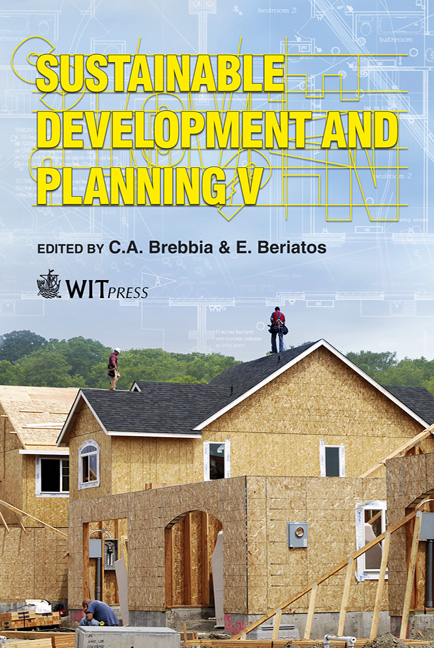Overview Of Current Energy Policy And Standards In The Building Sector In Iran
Price
Free (open access)
Transaction
Volume
150
Pages
12
Page Range
189 - 200
Published
2011
Size
2,902 kb
Paper DOI
10.2495/SDP110171
Copyright
WIT Press
Author(s)
M. Riazi & S. M. Hosseyni
Abstract
The enormous growth in urbanisation worldwide, particularly in developing countries, has negatively affected the local, regional and global environment. It will have a profound impact upon world demand for energy, if this trend continues. It should be noted that the major source of energy use in Iran is fossil fuel, which inevitably leads to exhaustion of energy supplies as well as environmental problems (notably air pollution and greenhouse gas emission). According to the energy balance 2008, the Iranian building sector accounts for about 42% of total energy use. This huge amount of energy consumption has pointed out the need for more restricted energy efficiency policies to address a substantial reduction of CO2 emission in the building sector and consequently ensuring climate security for future generations. The authors made a careful consideration of the code for energy efficiency of buildings, the Iran national standard and the renewable energy status in the country. In this paper, relevant facts and figures about the Iranian building energy consumption and CO2 emission have been presented. The current energy efficiency policies have been reviewed, including: the national code for sustainable design- Code No. 19- and National standards related to energy efficiency. The government policies on development of environmentally friendly energy resources and their progress during the last decade have been presented. Code 19 and renewable energy policy have been implemented by 20 and 38 percent by 2010 respectively. Accordingly, it is essential to establish more efficient strategies in these cases to meet the government target. The paper
Keywords
energy policy, building sector, energy efficiency, renewable energy, Iran





